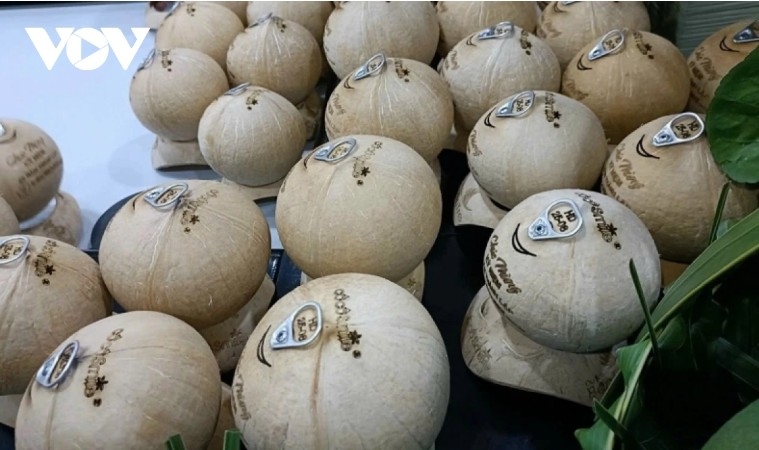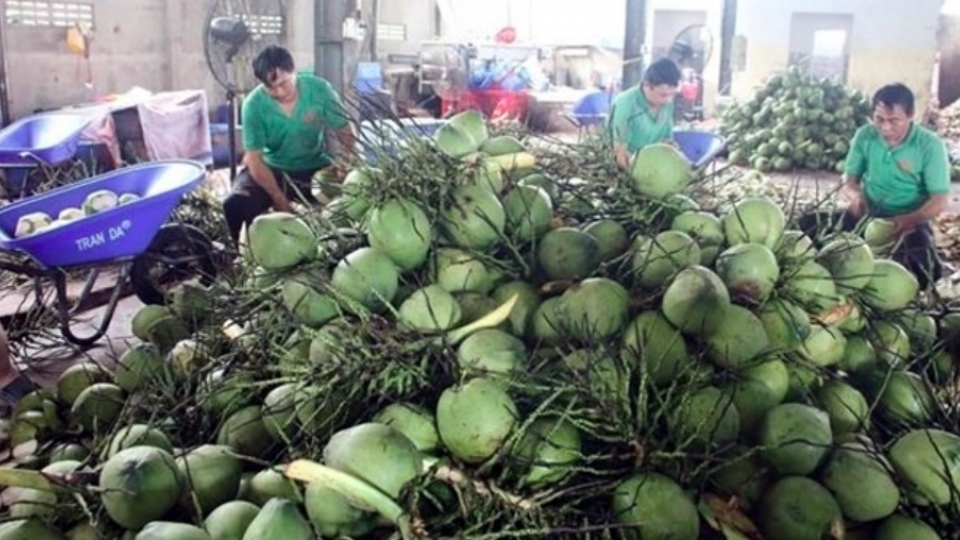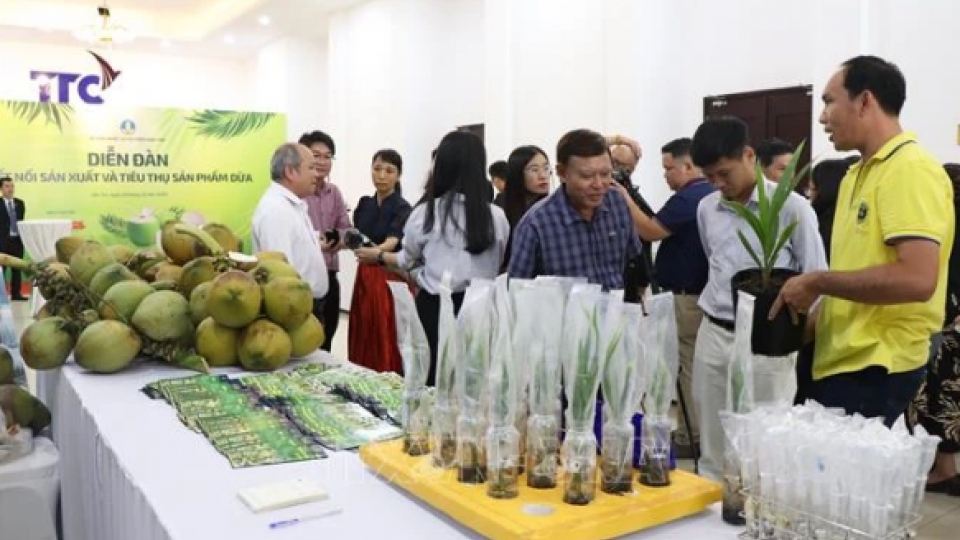Can Vietnam stay in the world’s top 5 for coconut exports?
VOV.VN - With strong export growth and a top-five global ranking, Vietnam’s coconut industry is gaining international recognition, but sustainable success will depend on traceability, deep processing, and brand building.

Vietnam is currently among the world’s five largest coconut exporters. According to the Ministry of Agriculture and Environment, the country has around 202,000 hectares of coconut plantations, of which 181,000 hectares are under harvest, producing 2.28 million tonnes. Vietnamese coconuts and coconut-based products are exported to China, the United States, the EU, Japan, the Republic of Korea, and Canada.
However, the sector continues to face several bottlenecks. Processing remains largely manual, resulting in cost disadvantages and logistical inefficiencies. Farmers’ unregulated crossbreeding practices have lowered product quality, and improper selection between water coconuts and oil coconuts can affect the integrity of products during international transport.
Experts say that to ensure sustainable development, the sector must secure a stable supply of raw materials in terms of both quantity and quality. Technological adoption, productivity improvements, and modernization are essential. Digital mapping of coconut-growing areas and traceability codes are key tools to affirm product value and enable exports.
Integrating plantation data with QR codes enhances supply chain transparency, increases product credibility, and helps build a stronger national coconut brand. In parallel, greater investment in marketing, both at the cooperative level and nationally, is needed to elevate product recognition in key export markets.
Globally, only 179 countries currently export coconut products. Of these, Vietnam, along with the Philippines, Indonesia, India, Sri Lanka, and Malaysia, accounts for over 90% of total global exports.
By 2030, Vietnam aims to expand coconut cultivation to between 195,000 and 210,000 hectares, with over 30% of the area certified to GAP standards and granted traceability codes. Yet the industry still faces stiff competition from Thailand and Indonesia, while product quality remains uneven and both traceability systems and GAP compliance are still limited.
According to the Vietnam Fruit and Vegetable Association, the country currently ranks fourth in coconut exports in the Asia-Pacific region and fifth globally. With the official export protocol to China signed in August 2024, Vietnam is poised to become China’s third-largest coconut supplier, expected to capture over 20% of the highly lucrative market.
To maintain its position, Vietnam’s coconut sector must invest in brand-building, deepen processing capacity, strengthen value chain linkages, and reduce its reliance on raw material exports.




